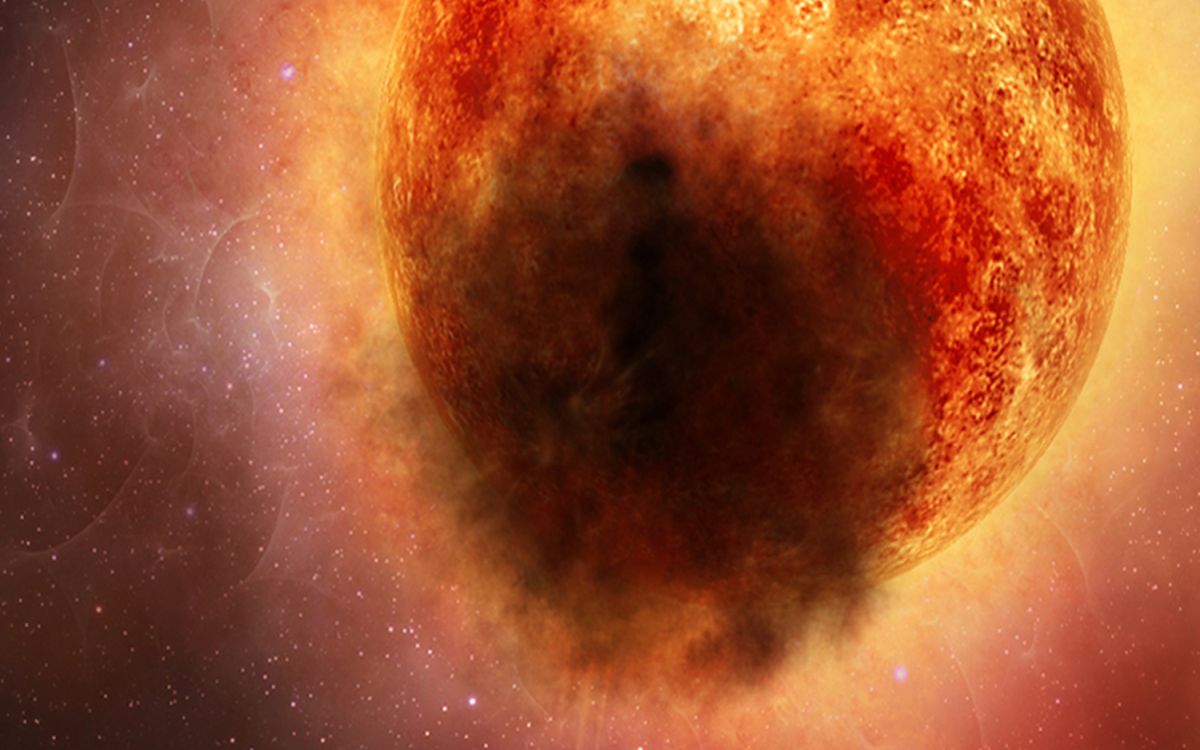Cosmos Betelgeuse
Between October 2019 and February 2020 the brightness of the star Betelgeuse has dropped by more than a factor of three. New observations by the NASA/ESA Hubble Space Telescope and the robotic STELLA telescope of the Leibniz Institute for Astrophysics Potsdam (AIP) now provide an explanation for the phenomenon.
Thanks to new observational data obtained with the Hubble Space Telescope, an international team has now identified a dust cloud as the probable cause of the dimming: Scientists believe that the star unleashed superhot plasma from an upwelling of a large convection cell on the star’s surface, similar to rising hot bubbles in boiling water, only many hundred times the size of our Sun. The material then passed through the hot atmosphere to the colder outer layers of the star. There it cooled down and the resulting huge dust cloud blocked the light from about a quarter of the star’s surface, beginning in late 2019. By April 2020, the star had returned to its normal brightness.
The Hubble observations are part of a three-year Hubble study to monitor variations in the star’s outer atmosphere. The timeline that has been produced since then provided important new clues to the mechanism behind the dimming. Hubble observed the layers above the star’s surface, which are so hot that they emit mostly in the ultraviolet region of the spectrum.
